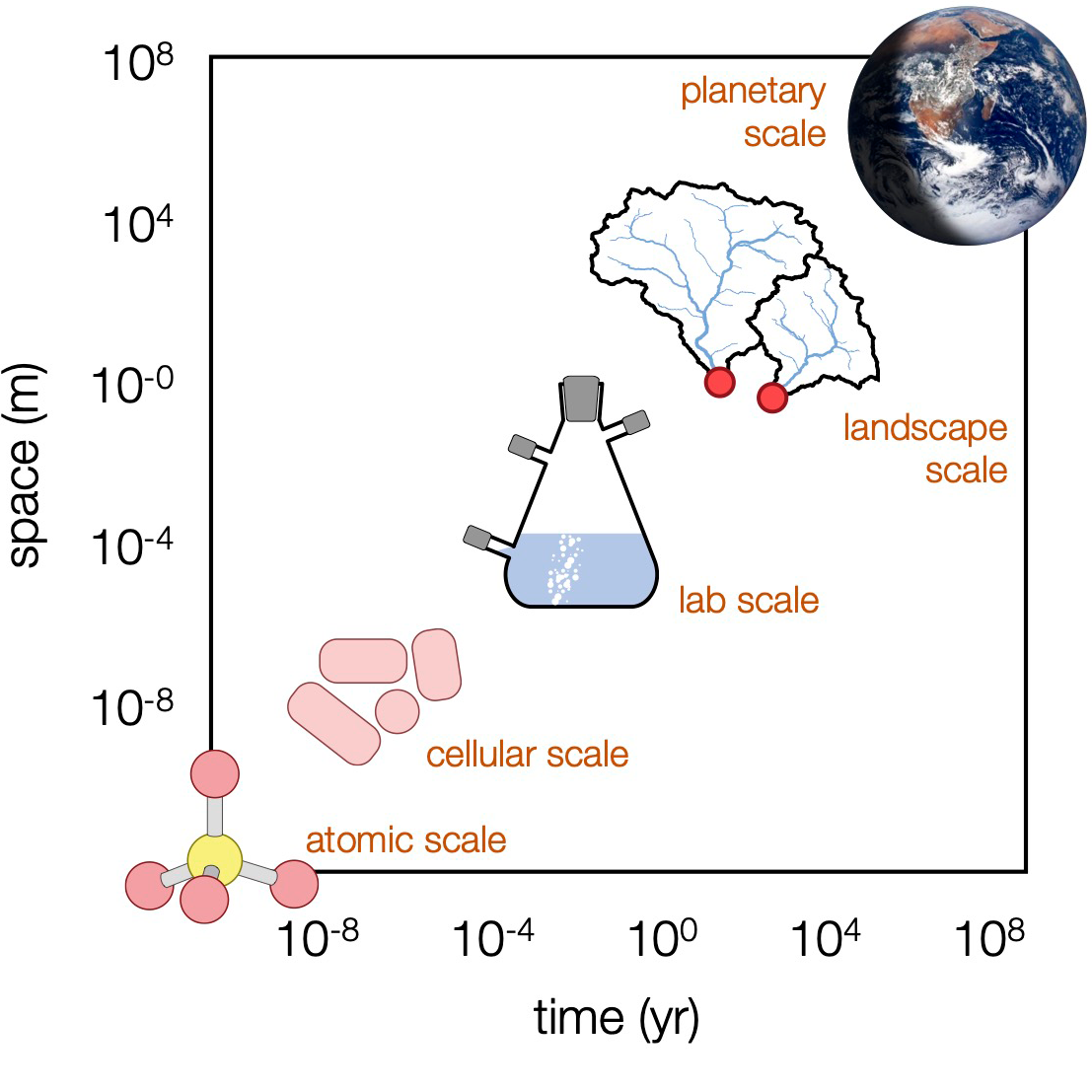Research
The Surface Earth Evolution group studies how geologic, climatic, and biologic factors regulate the chemical composition of the oceans and atmosphere throughout Earth’s history.

The Surface Earth Evolution laboratory (SEELab) studies how geologic, climatic, and biologic factors regulate Earth-surface processes and the chemical composition of the oceans and atmosphere throughout Earth’s history. Our work incorporates three central pillars that span several spatial and temporal scales:
1. Laboratory experiments and novel proxy development

Much of what we know about past environments comes from proxy records, but our collective understanding of what controls these proxies is often incomplete. “Laboratory calibrations” are therefore crucial to confidently reconstruct the geologic past. Our group uses a combination of quantum chemical calculations, high-precision mass spectrometry, and laboratory incubation experiments to constrain how isotope signals—primarily those of carbon, oxygen, and sulfur—reflect various geologic and biologic processes. We are particularly interested in the interactions between mineral surfaces and their surrounding environment. For example, this includes understanding how short-lived reactive oxygen species drive redox reactions on pyrite grains, a process with implications ranging from the origin of life to modern oxygen and carbon dioxide budgets. This also includes developing new proxies based on clay-mineral oxygen isotopic compositions to constrain paleoaltitutes and Earth’s silicate weathering thermostat through time.
2. Field work in modern soil, river, and groundwater systems

We measure modern systems to gain “real-world” mechanistic insight into the climatic, geomorphological, and sedimentological and factors that govern various biogeochemical processes, both today and in the geologic past. This work additionally allows us to calibrate our proxies and constrain how changes in these governing factors are recorded in geologic archives. By strategically utilising natural gradients, we aim to isolate and constrain how geochemical processes such as rock weathering respond to forcings such as temperature, hydrology, and erosion rate. We are particularly interested in processes that occur at organic carbon-mineral interfaces and at redox boundaries. For example, this includes our multi-disciplinary projects aimed at understanding: (i) how particle transport regulates the carbon cycle in the Congo Basin, Central Africa; (ii) how denudation rate controls sulfur-cycling microbial communities in groundwaters of the Garwahl Himalayas, India; and (iii) how the origin and importance of so-called “dark” oxygen production in groundwaters.
Most recently, we are additionally beginning experiments—funded through a Collaborative ETH Research Grant—to understand the role of enhanced rock weathering on soil organic carbon preservation and microbial community structure. This work aims to shed new light on this developing carbon-dioxide removal technology.
3. Earth-history reconstructions

Using the insights gained from the laboratory and modern field settings, we apply these novel proxies to geologic archives to reconstruct how and why climate, weathering, and the chemical compositions of the oceans and atmosphere have evolved throughout Earth’s history. This often involves working in close collaboration with local field geologists at our study sites. Previous reconstructions include quantifying the severity of Neoproterozoic “snowball” Earth events using oxygen-isotope signals recorded in Mackenzie Mountain ironstone formations and discerning the ecological drivers of Mesozoic ocean anoxic events using molecular and carbon-isotope signals in marine sediments. Ongoing work within this theme is focused on understanding, for example, how sedimentation rate controls organic carbon preservation over multi-million year timescales and the fidelity of carbonate oxygen isotope records as a proxy for past seawater temperatures.
In addition to Earth’s history, this work carries implications for our ability to constrain how life can survive on other planets. This relates to the ETH Center for the Origin and Prevalence of Life, of which our research group is an active member.